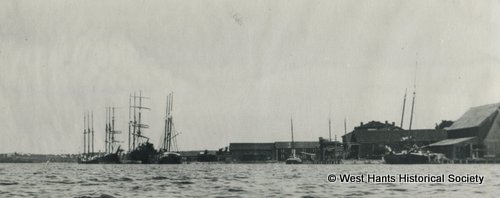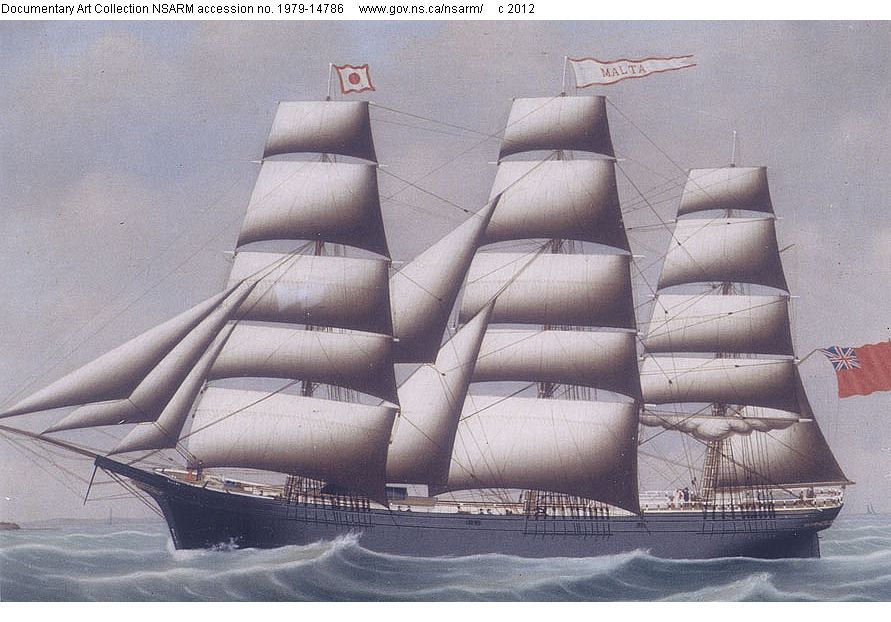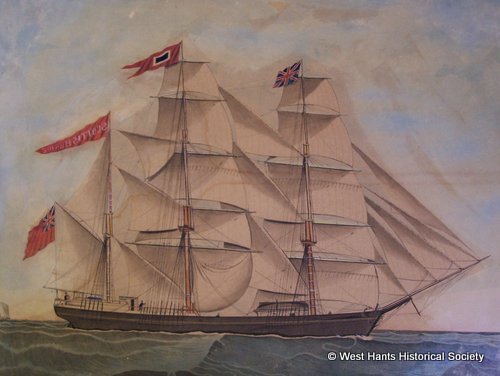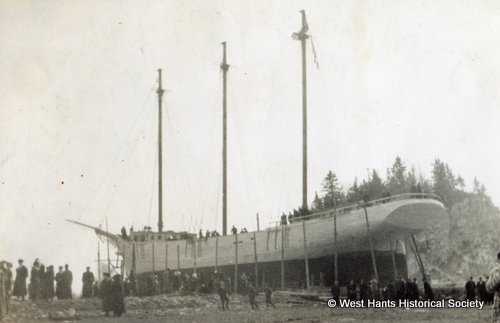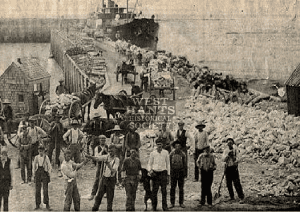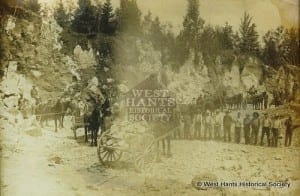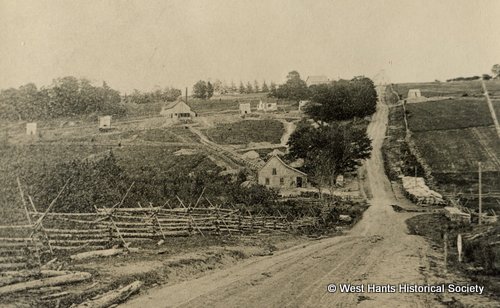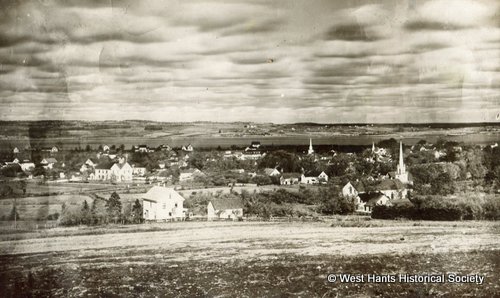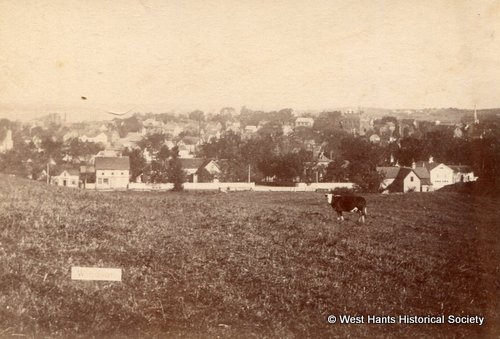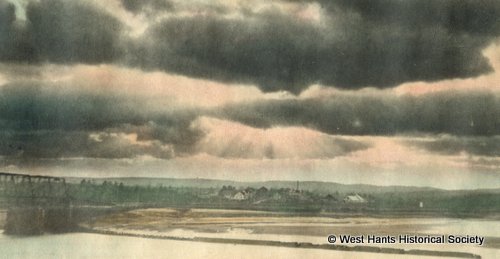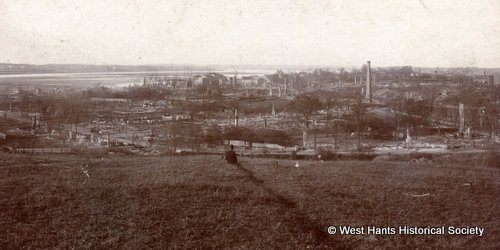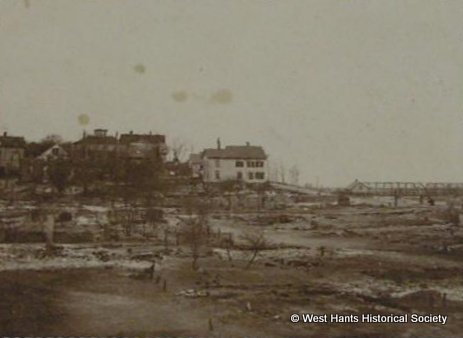The First Inhabitants
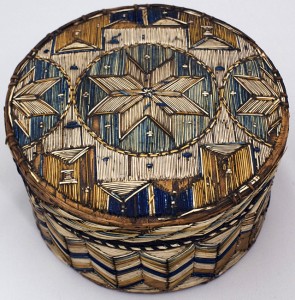
The Mi’kmaq were the first people of Hants County, having arrived several thousand years ago. They were semi-nomadic and hunted, fished and gathered to make their living. They made their encampments along the rivers at the “head of the tide” where the fishing was easy.
The arrival of the Europeans brought enormous change to the Mi’kmaq’s way of life. Their land and resources were taken from them and they were beset with disease and starvation. A census in 1764 recorded two tribes totaling 131 people living between Windsor and the Gaspereau river.
In Hants County, agents such as Lieutenant Governor Michael Francklin distributed ‘welfare’ payments and the settlers, such as Mary Cannon of Castle Frederick and Edward King of Windsor Forks, helped out. Between 1820-1848 reserves were established including one in eastern Hants at Shubenacadie.
Between 1870-1885 on King Street in Curry’s Corner, an old burial area was unearthed in which bodies of the Mi’kmaq people were found wrapped in birch bark, as was the custom, suggesting that a Mi’kmaq mission chapel had existed nearby.
The French

The French (or the ‘Acadians’ as they were called) arrived in Hants from King’s County around 1685. By 1748, 2700 French people were settled in the Hants area.
The Acadians were farmers and they favoured the fertile marshlands on which to grow their grain. They protected theses fields with dykes which are large mounds of earth containing passageways that let the river flow onto the fields at a farmer’s discretion. These dykes are still visible today.
However, the French Acadians were viewed as a threat to the English who had control of mainland Nova Scotia. In 1755 the Acadians were deported. Alexander Murray, who at the time was in charge of English Fort Edward in Windsor, reported to have deported more than 1,000 Acadians. They were sent from Windsor by sea to the American colonies and French territories.
Following the deportation, close to a hundred Acadians that had escaped deportation were imprisoned at the Fort.
These remaining stragglers were sent to work at Castle Frederick in Falmouth or to Cape Breton, Prince Edward Island and the Digby area of mainland Nova Scotia.
The English
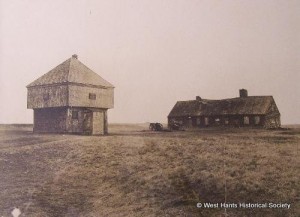
The English first came to Hants County in 1750 when Major Charles Lawrence brought the 45th regiment to the junction of the St. Croix and Avon Rivers. There, a fort was built in what is now Windsor. It included a wooden blockhouse, soldier’s barracks and a variety of smaller buildings with four bastions surrounded by a wooden palisade and moat.
The fort helped to strengthen the English position in the area and served as a half-way point between English strongholds in Annapolis Royal and Halifax.
The Planters came to Hants County in 1760-61 from New England. They settled in Falmouth, Newport Landing, Windsor Forks and Brooklyn. The English colonies had become crowded and its inhabitants were eager to find new farmland.
Arriving in Windsor, they quickly developed the area, forming towns and villages and building churches, roads and schools. They also established a flourishing shipbuilding industry. A large proportion of the current population of Hants County is descended from the Planters.
The Loyalists, Americans who favoured British control of the United States, came to Hants County between 1783-84. They introduced Methodism to the area. As they were largely a wealthy and well-educated people, they also founded King’s College in Windsor. King’s College still exists today as King’s-Edgehill, a private high school.
The Black Communities of West Hants
An important part of the historical tapestry of West Hants is the story of the black communities in this area about which there is a growing interest. We hope to provide a fuller account of this aspect of the historical record in the future.
Industries
Shipbuilding
Shipbuilding was a prominent industry between 1840 and 1890. It flourished mainly in Windsor, Hantsport, Newport Landing and the Kempt Shore. In Windsor, Bennett Smith and Shubael Dimock dominated the shipbuilding industry. Robert Fuller and John Davison oversaw the Churchill yards in Hantsport and Moshers and Harvies had their own businesses in Newport Landing. Master builders such as John Caldwell and Roderick Rose worked in the Kempt Shore industry.
These builders sold their ships world-wide, one of the most frequent customers being Liverpool, England. The profit from these sales allowed many Hants County residents to experience unimagined luxury. However, in the 1870’s the industry began to slow as steamers became more prominent.
Gypsum Mining
Gypsum is a non-metallic, soft rock that is used in plaster products. It is found in abundance in the shallow river valleys of Hants County.
The first people to quarry the rock were the Acadians, however, the industry only began in earnest in the late 1700’s.
Gypsum was shipped in mass quantities from Windsor out to the Bay of Fundy where it was loaded on boats bound for the American states.
The loader used to move gypsum from the storage building to waiting ships was one of the fastest ship-loaders in the world. The extreme tides in the Minas Basin require ships to enter and leave the port within a four to five hour period.
The Fundy Gypsum Company was quarried at two locations near Windsor, and the gypsum was sent by train to Hantsport where it was shipped off. The Fundy Gypsum Company was in operation until 2011, when it closed permanently.
Towns
The Great Fire of 1897 (Windsor)
The fire started on the waterfront at about 2:30 AM on Sunday 17th of October 1897. The fire was held in check until about 4:00 AM when a gale came up and within minutes the fire spread throughout the town of Windsor. By nightfall very little of the town remained.
The fire was fought by crews from Windsor, Hantsport, and Halifax. An area of about 6 blocks square was totally destroyed including 4 churches, the entire commercial district, the waterfront, and hundreds of homes. Homes left standing were opened to the homeless as were the Railway Station, Drillio’s Barn and the Sail Loft.
Canvas tents were set up on the slopes of Fort Edward and at Kings College School to house the nearly 300 men, women and children who didn’t find shelter elsewhere. Soldiers were brought in to control the looting and to protect the relief supplies that were pouring in from across the province and Canada. Damage was estimated at $2 million at a time when a good wage was $10 a week.
Sources:
Historic Hants County by Gwenolyn Vaughan Shand
John V. Duncanson’s Falmouth and Rawdon books
The Hantsport Historical Society web page
The Town of Windsor web page
Other Links:

